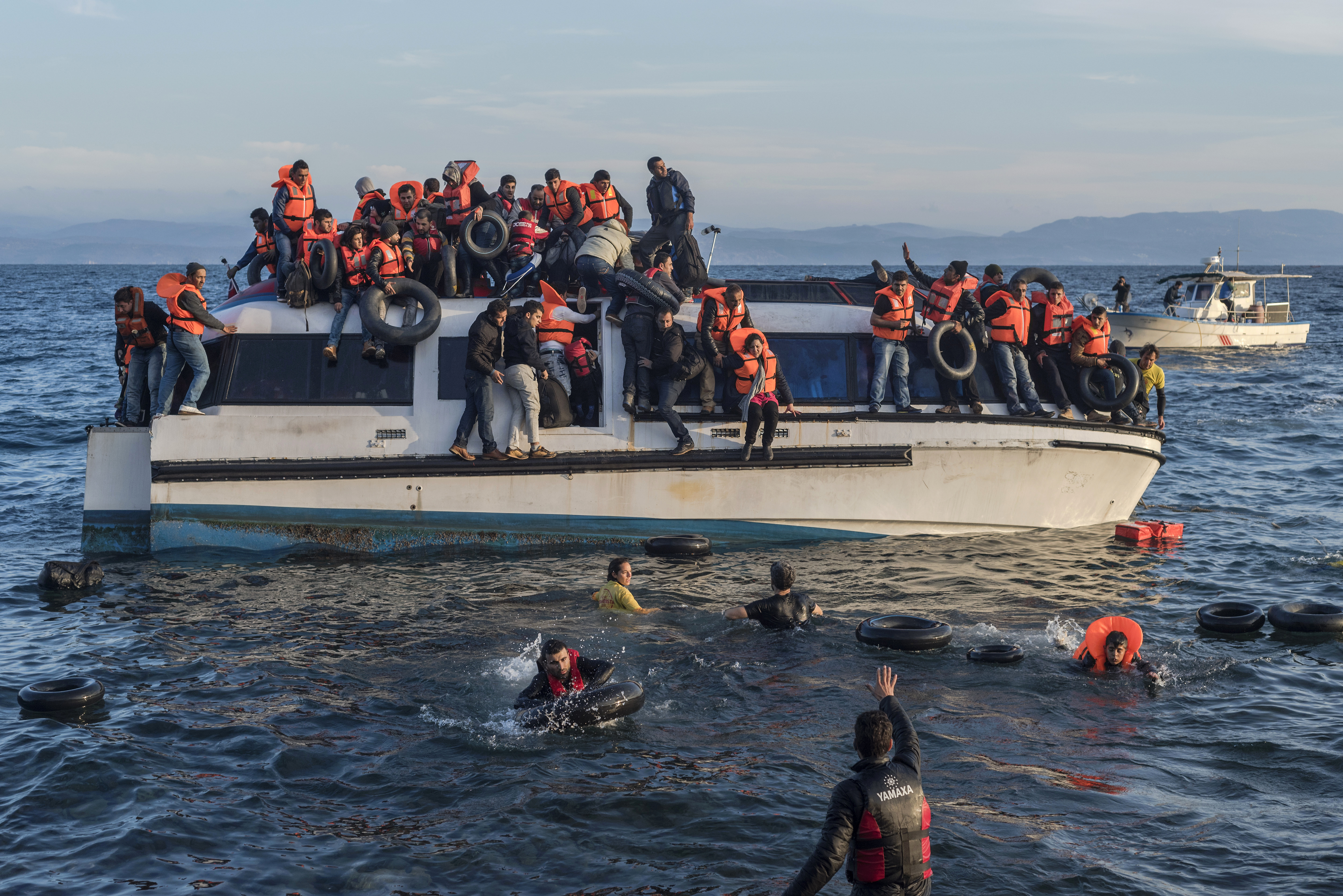
Forced displacement
Forced displacement (also forced migration or forced relocation) is an involuntary or coerced movement of a person or people away from their home or home region. The UNHCR defines 'forced displacement' as follows: displaced "as a result of persecution, conflict, generalized violence or human rights violations".[2]
Total population
34.6 million
57.3 million
2.9 million
A forcibly displaced person may also be referred to as a "forced migrant", a "displaced person" (DP), or, if displaced within the home country, an "internally displaced person" (IDP). While some displaced persons may be considered as refugees, the latter term specifically refers to such displaced persons who are receiving legally-defined protection and are recognized as such by their country of residence and/or international organizations.
Forced displacement has gained attention in international discussions and policy making since the European migrant crisis. This has since resulted in a greater consideration of the impacts of forced migration on affected regions outside Europe. Various international, regional, and local organizations are developing and implementing approaches to both prevent and mitigate the impact of forced migration in the previous home regions as well as the receiving or destination regions.[3][4][5] Additionally, some collaboration efforts are made to gather evidence in order to seek prosecution of those involved in causing events of human-made forced migration.[6] An estimated 100 million people around the world were forcibly displaced by the end of 2022, with the majority coming from the Global South.[7][8]
Responses to forced displacement[edit]
International response[edit]
Responses to situations of forced displacement vary across regional and international levels, with each type of forced displacement demonstrating unique characteristics and the need for a considerate approach. At the international level, international organizations (e.g. the UNHCR), NGOs (Doctors without Borders), and country governments (USAID) may work towards directly or indirectly ameliorating these situations.[3] Means may include establishing internationally recognized protections, providing clinics to migrant camps, and supplying resources to populations.[4][5] According to researchers such as Francis Deng, as well as international organizations such as the UN, an increase in IDPs compounds the difficulty of international responses, posing issues of incomplete information and questions regarding state sovereignty.[60][3][61] State sovereignty especially becomes of concern when discussing protections for IDPs, who are within the borders of a sovereign state, placing reluctance in the international community's ability to respond.[62] Multiple landmark conventions aim at providing rights and protections to the different categories of forcibly displaced persons, including the 1951 Refugee Convention, the 1967 Protocol, the Kampala Convention, and the 1998 Guiding Principles.[63][58] Despite internationally cooperation, these frameworks rely on the international system, which states may disregard. In a 2012 study, Young Hoon Song found that nations "very selectively" responded to instances of forced migration and internally displaced persons.[62]
World organizations such as the United Nations and the World Bank, as well as individual countries, sometimes directly respond to the challenges faced by displaced people, providing humanitarian assistance or forcibly intervening in the country of conflict. Disputes related to these organizations' neutrality and limited resources has affected the capabilities of international humanitarian action to mitigate mass displacement mass displacement's causes.[64] These broad forms of assistance sometimes do not fully address the multidimensional needs of displaced persons. Regardless, calls for multilateral responses echo across organizations in the face of falling international cooperation. These organizations propose more comprehensive approaches, calling for improved conflict resolution and capacity-building in order to reduce instances of forced displacement.[65][66]
Local response[edit]
Responses at multiple levels[67] and across sectors is vital.[68] A research has for instance highlighted the importance of collaboration between businesses and non-governmental organizations to tackle resettlement and employment issues.[69]
Lived in experiences of displaced persons will vary according to the state and local policies of their country of relocation. Policies reflecting national exclusion of displaced persons may be undone by inclusive urban policies. Sanctuary cities are an example of spaces that regulate their cooperation or participation with immigration law enforcement.[70] The practice of urban membership upon residence allows displaced persons to have access to city services and benefits, regardless of their legal status.[71] Sanctuary cities have been able to provide migrants with greater mobility and participation in activities limiting the collection of personal information, issuing identification cards to all residents, and providing access to crucial services such as health care.[70] Access to these services can ease the hardships of displaced people by allowing them to healthily adjust to life after displacement .
Criminal prosecution[edit]
Forced displacement has been the subject of several trials in local and international courts. For an offense to classify as a war crime, the civilian victim must be a "protected person" under international humanitarian law. Originally referring only categories of individuals explicitly protected under one of the four Geneva Conventions of 1949, "protected person" now refers to any category of individuals entitled to protection under specific law of war treaties.[72]
In Article 49, the Fourth Geneva Convention, adopted on 12 August 1949, specifically forbade forced displacement
The Rome Statute of the International Criminal Court defines forced displacement as a crime within the jurisdiction of the court: